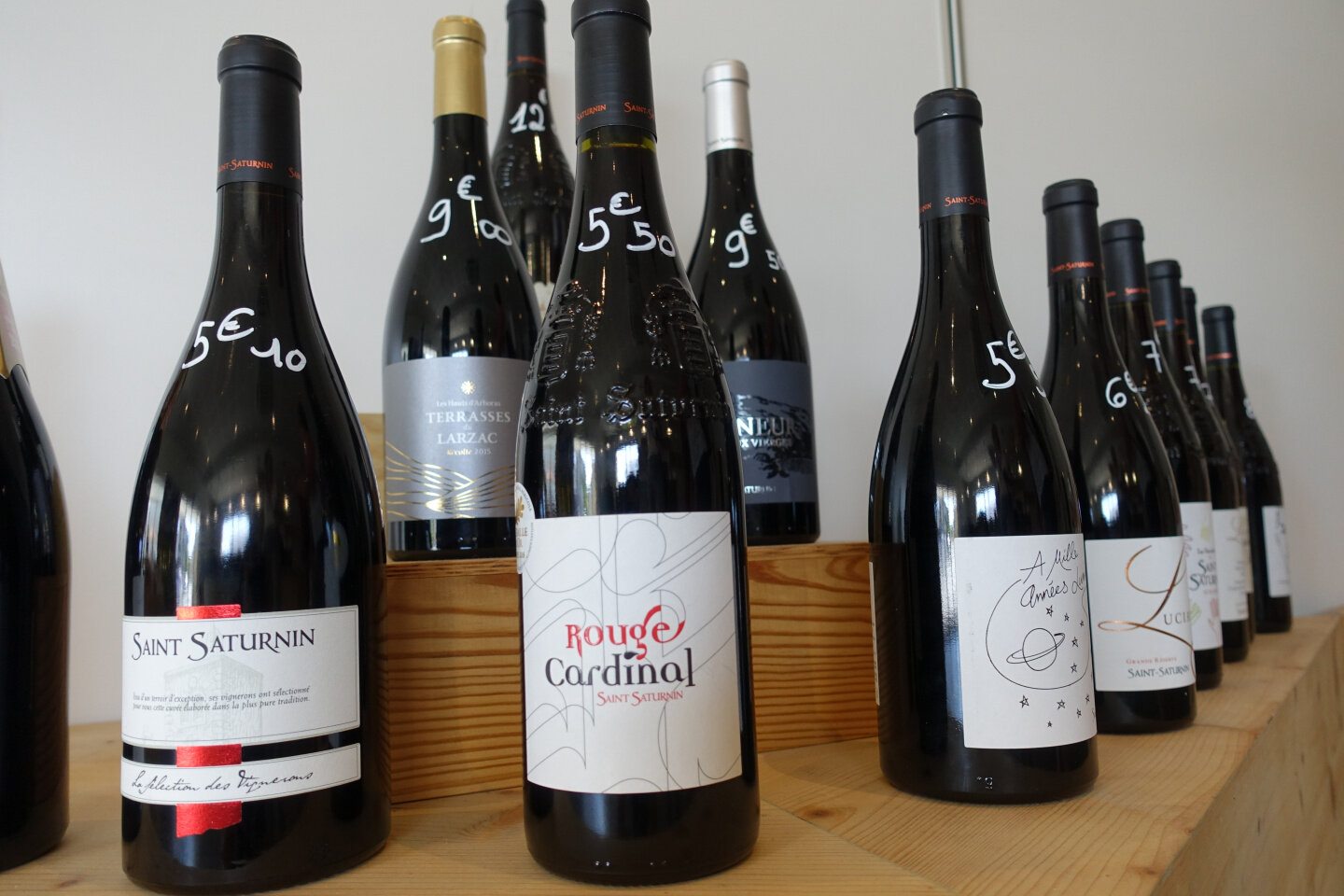A weekend in the Languedoc - Part Deux: Every wine has a story
One of the fabulous things about the Languedoc is that you are never far away from wine. There are vines everywhere you turn and in every village there will be someone making their own wine (in Liausson, it’s the village mayor, as introduced to this story in Part One). There are also larger wineries and shops where you can see big production close up and, of course, try and buy the wines.
On our first day waking up in Liausson, we couldn’t think of a better way to spend our time than visiting a few wineries and doing some tasting – wine is the best way to become acclimatised to a new place, right? Within a short drive from Chris and Ian’s house, there are three wineries that they often visit to buy wine from, so we set off on our little outing as soon as they opened in the afternoon.
Our first stop is Saint-Saturnin, a winery that has been in operation for 60 years. They still sell the first wine to come out of their cellar, Vin d’Une Nuit (which is their flagship wine available in every receptacle you can think of) but, as we find out, the range of styles and quality here show how far they (and the region and our tastes) have come. There are simple wines that are well-balanced and perfectly gluggable, and there are some really elegant, sophisticated wines that would definitely compete with some of the world favourites that you would pay much, much more for.
The part of the winery open to the visiting public doesn’t look like your rustic, 60 year old French cellar – it’s a bright, open, modern reception space where you can taste wines at a long, slate-grey counter top. We end up tasting nineteen wines here (to the immense patience and grace of our host!) – a selection of whites, rosés and reds. The rosés are very popular with the locals, but the offering here goes far beyond what we have come to expect in the UK (the pale Provence style is the only acceptable choice on London bar terraces in the summer). There is pale – actually, Puech Arnet IGP Mont Baudile is the palest I’ve even seen (I think the skins were just waved in its general direction) – but there are also deeper pinks (Blossom Hill White Zinfandel – you did this hue no good), which are bursting with red berries and possess a wonderfully generous palate. When I think of enjoying rosé, I picture dappled sunshine, light glinting through gorgeous salmon-pink; lazy, hazy afternoons; the clink of cutlery elsewhere and not having to be anywhere too soon. There’s definitely a time and a place for rosé for me and, if it’s anywhere, the sunny Languedoc is it.
We take our time over trying the reds and from the mid-range onwards they get really good. The more premium ones are GSM blends (Grenache, Syrah, Mourvèdre – I love this blend) and they are soft, spicy and velvety, possessing that particular herbaceous ‘garrigue’ aroma that places your senses right on the Mediterranean coast. I really like Sentier des Poètes, a deeply-coloured, blackcurrant-scented, full-bodied wine that ends with a wave of liquorice, and Les Hauts d’Arboras AOP Terrasses du Larzac, a powerful yet elegant wine offering aromas of concentrated fruit, herbs and mocha spice, which is silky in the mouth and provides a long, spicy finish. One of the most complex wines in the collection is Seigneur des Deux Vierges – a powerhouse of aromas and flavours. With a pronounced nose of black fruit, leather, coffee, dark chocolate and spices, the flavours all come together smoothly on the palate and linger on and on.
We make our next stop in the village of Saint-Félix de Lodez at Vignoble des 2 Terres, so called because the vineyards here are on two very different terroirs – one is made up of clay and limestone, set in high terraces, and the other is red ‘ruffe’ rock, with soil rich in clay sediments and iron oxides – giving very different styles of wine. This winery is a co-operative, which isn’t unusual in the Languedoc, and in 1942 the two cellars, Cave de Saint Jean de la Blaquière and Cave de Saint Félix de Lodez, merged together to combine forces. 150 growers produce the grapes for this winery and a hell of a lot of wine is made. There’s a bit of snobbery about co-operatives in the wine world, but they have a bevy of award-winning wines here, which they put down to the exceptional climatic conditions and fine blending.
It’s a bit of a one-stop shop here, where you can bring your own containers and fill them up with everyday wine from vats on the wall or taste some rather fine wines at the counter and go away with a few bottles to save for a special occasion. Even the bottled wine is amazing value, though – for example, Saint Jacques (which bears a Gold Medal Vinalies 2017), a deep ruby wine with a spicy and herbaceous nose of thyme and pepper and ripe, almost baked, black fruits with super-smooth tannins, will set you back €4.50 a bottle.
Their premium dénomination is Terraces du Larzac, which is admired for its exceptional, diverse terroirs. These range from sandy clay soils with pebbles, to multi-coloured schist terraces, to ancient terraces of rolled pebbles, to red ruffes in horizontal layers and high marl-limestone terraces dominated by the cliffs of Larzac, making for stunning landscape views and, of course, a fantastic range of wine styles. These amazing, changing landscapes are quite a magical natural attribute that not everywhere possesses, but the Languedoc does. I like Les Hauts des Privats for its rich notes of dark chocolate, mocha and liquorice, and wonderful silky tannins.
Our last visit of the day is at Vignerons & Passions, a magnificent shop with tasting rooms in Saint Félix de Lodez. The mission of Vignerons & Passions is ‘to share the Languedoc’ and so you get a huge breadth of wine styles here, which is great if you’re after an overview of the whole region. There is a sense of pride here in the quality of wines and in the passion of the winemakers – which seems to be the theme threading through the region as a whole, something I also felt when talking to the winemakers at the Sud de France tasting in London.
The friendly staff assist us in tasting a couple of wines – Secret de Lunès Carignan Vieilles Vignes 2016 and Les Hauts de Castelmaure 2016 Corbières. Two very different styles – the Carignan is bright ruby in colour and very fruity, brimming with red cherries, whereas the Corbieres (my preferred) is all about the black fruits and that unmistakable bushy ‘garrigue’.
After a day of tasting the Languedoc, my conclusions are thus: this is a region about pride, diversity and story. There are convivial wines – wines that you might fill an old plastic water butt with and drink out of stubby glasses. There are refined and elegant wines that you might umm and ahh over opening at a dinner party because they are just too good and maybe they will age to be even better (they will!). The landscapes will tell you that you could never just have one style of wine here and the people will tell you their stories of coming together to develop, move forward and compete with the world. There’s a hardy pride to the Languedoc region, as tough and as wild as the scrubland of juniper, thyme, rosemary and lavender, which we refer to as ‘garrigue’ – that unique aroma of the land here. For all of its highs and its lows, the Languedoc is a place of character – and there’s no doubt you can taste it in the wine.




